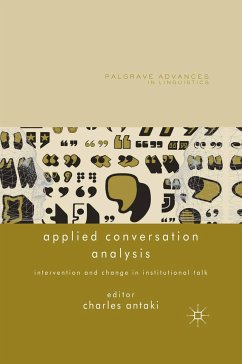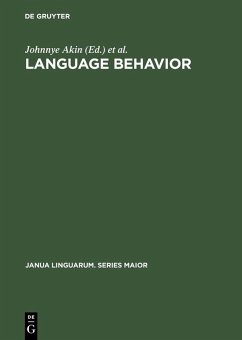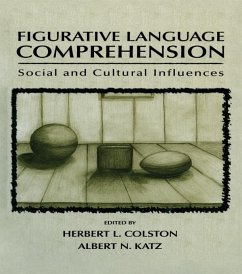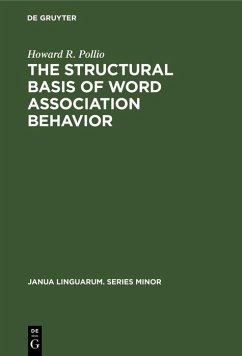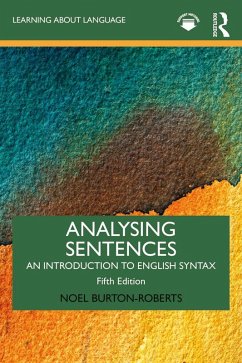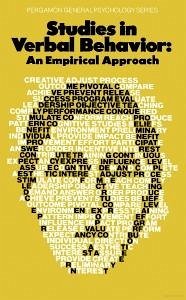
Studies in Verbal Behavior (eBook, PDF)
An Empirical Approach
Redaktion: Salzinger, Kurt; Feldman, Richard S.

PAYBACK Punkte
20 °P sammeln!
Studies in Verbal Behavior: An Empirical Approach summarizes the results of empirical studies on the variables that control verbal behavior. These studies explore the response properties of verbal behavior already acquired, with respect to size of unit, mode of emission, and the constraining effects of sentence frames. The stimulus situation in which the behavior is emitted, the use of verbal material as stimulus, and the relationship between sequential guessing of sentences and the marking off of ""idea unit"" boundaries in the same material are also discussed. This volume first introduces th...
Studies in Verbal Behavior: An Empirical Approach summarizes the results of empirical studies on the variables that control verbal behavior. These studies explore the response properties of verbal behavior already acquired, with respect to size of unit, mode of emission, and the constraining effects of sentence frames. The stimulus situation in which the behavior is emitted, the use of verbal material as stimulus, and the relationship between sequential guessing of sentences and the marking off of ""idea unit"" boundaries in the same material are also discussed. This volume first introduces the reader to situations which will best allow us to view the basic lawfulness inherent in the control of verbal behavior. In particular, it explores response bias and serial effects in a modified Shannon Guessing Game and compares oral and written verbal behavior. Attention then turns to the manner in which the verbal stimulus controls various forms of behavior, paying particular attention to search time as a function of target location and frequency in language, along with some stimulus properties of syntagmatic and paradigmatic word sequences. The next section analyzes the effects of limiting the generation of sentences by length and by the presence of certain words or grammatical endings (bound morphemes) in particular positions of each sentence. Some characteristics of sentences as response units are highlighted. This book will be of value to psychologists and those who are interested in verbal behavior.
Dieser Download kann aus rechtlichen Gründen nur mit Rechnungsadresse in A, B, BG, CY, CZ, D, DK, EW, E, FIN, F, GR, HR, H, IRL, I, LT, L, LR, M, NL, PL, P, R, S, SLO, SK ausgeliefert werden.





